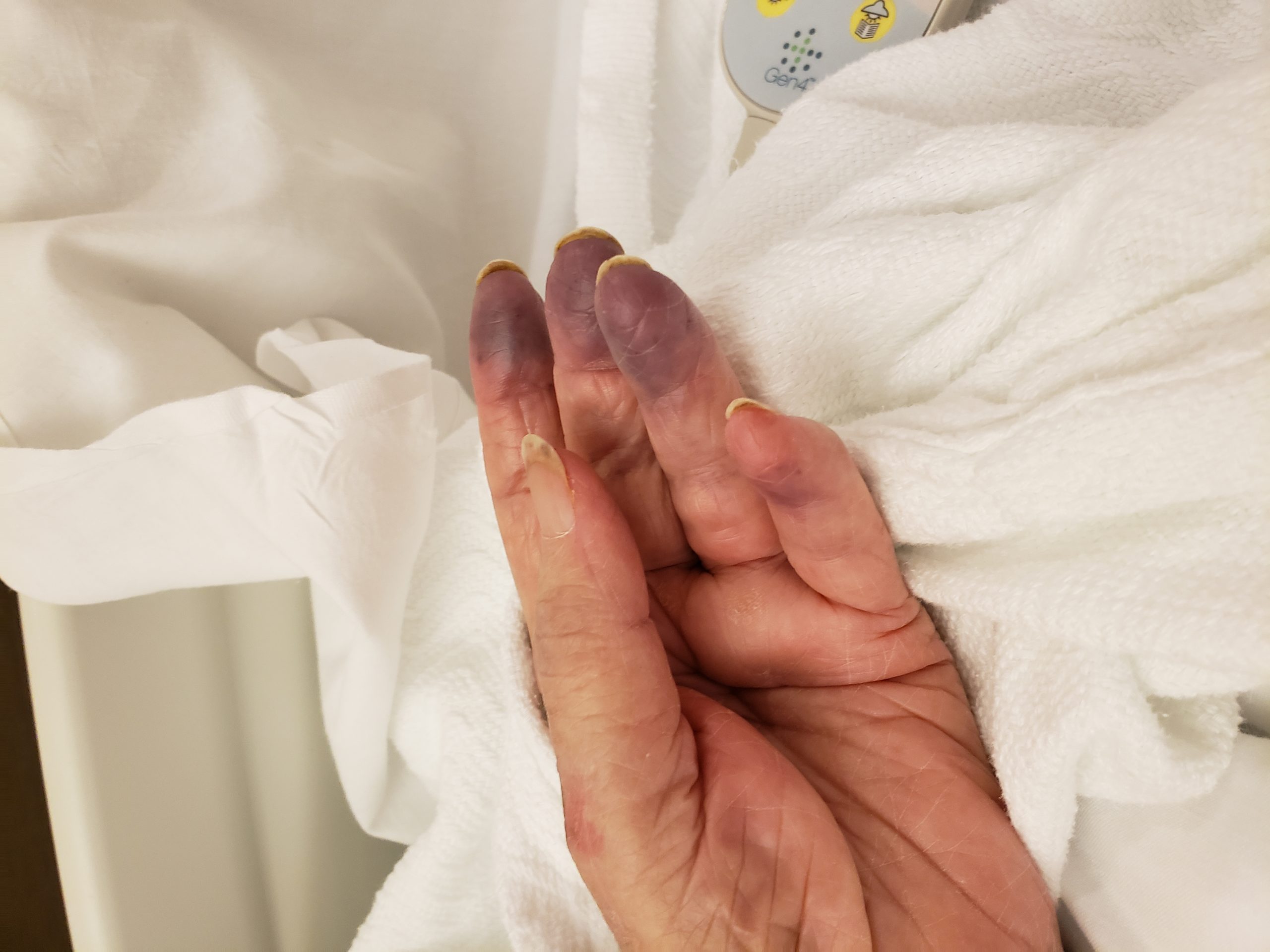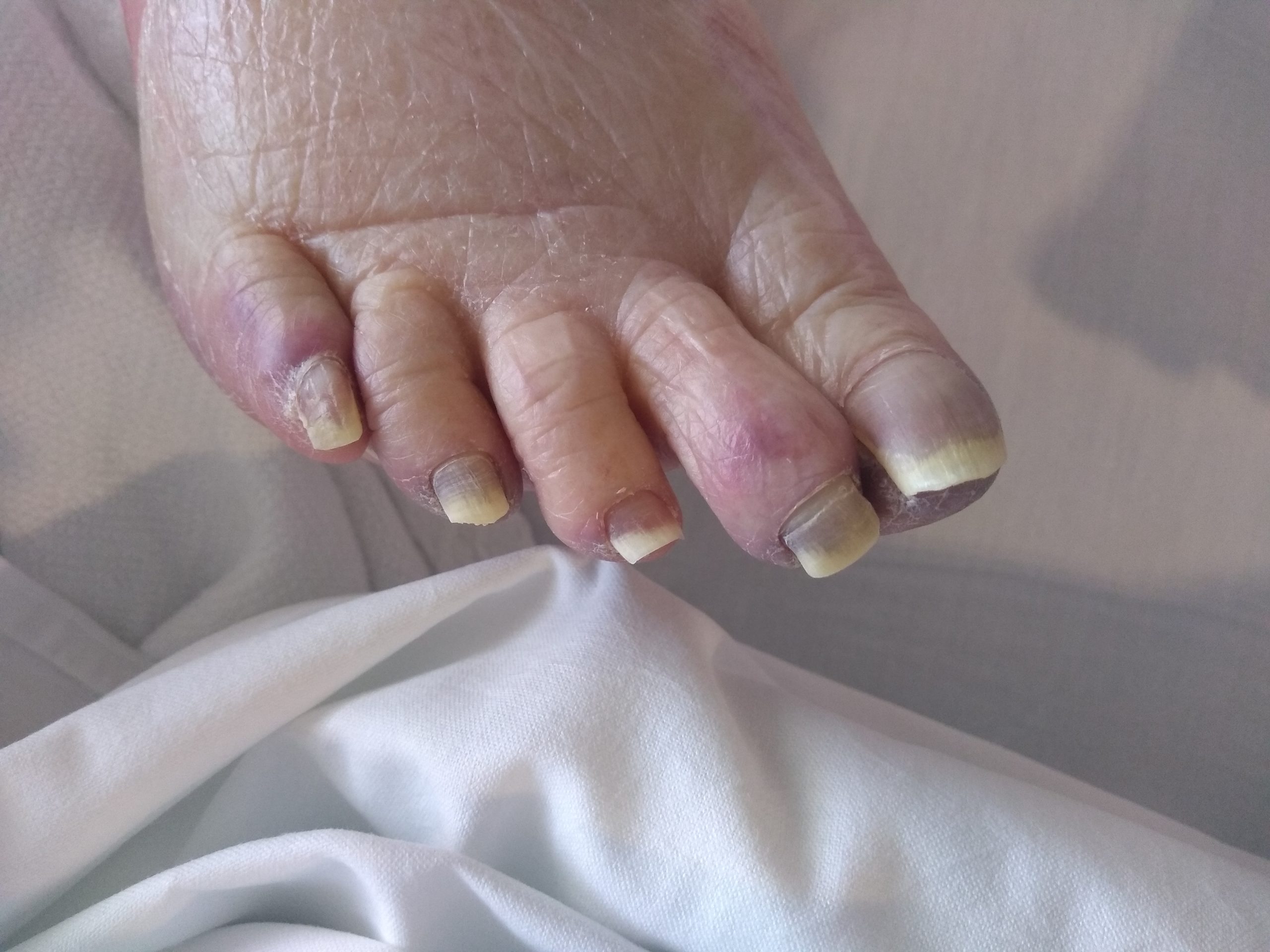Case Presentation: A 79-year-old woman with hypertension and rheumatoid arthritis presented with generalized fatigue and decline in her functional status over 6 months. Her symptoms progressed in the month preceding admission to nausea, vomiting, right upper quadrant pain, and intolerance to solids and liquids for several days. An outpatient abdominal ultrasound revealed only hepatic steatosis. She lived in a rural community with access to well water. Family members reported that her home smelled of urine and was littered with used diapers, dead mice and their droppings. They also reported she bathed in backed up bathtub water from a broken septic tank.On exam, her temperature was 96.3 F and her blood pressure was 73/47, which required low-dose vasopressor support. She was tender to palpation in her RUQ with a negative Murphy’s sign. There was purpura across her upper and lower extremities, and her extremities were cool with acrocyanosis (Figures 1 & 2). Her coloration improved with a warming blanket, but worsened with colder temperatures. She was encephalopathic, but was able to follow simple commands prior to intubation for airway protection.Labs demonstrated leukocytosis, thrombocytopenia, and cholestatic pattern of liver injury despite CT A/P and MRCP demonstrating no obstructive pathology. Her hospital course was complicated by renal failure requiring sustained low efficiency dialysis, and she made minimal improvement with broad spectrum antibiotics, including doxycycline. Infectious work-up, including a lumbar puncture along with rickettsial and leptospira serologies, was unrevealing. Her MRI brain showed no intracranial pathology. An EMG revealed localized areas of myopathy in her lower extremities. Autoimmune laboratories disclosed a positive ANA (1:16), low C3, low-normal C4, and positive cryoglobulins, confirming a diagnosis of cryoglobulinemia. The patient initially improved after four doses of weekly rituximab and high-dose steroids. She was successfully extubated and weaned off of dialysis. However, she deteriorated shortly thereafter and her family elected to transition to inpatient hospice.
Discussion: Identifying a unifying diagnosis for multi-system organ failure is often challenging. The differential is broad and frequently attributable to infectious causes, but autoimmune diseases can also present with a vague constellation of symptoms. We initially managed our patient as septic shock, but an extensive work-up pinpointed the diagnosis as connective tissue related cryoglobulinemia. This condition is associated with arthralgias, palpable purpura, and musculoskeletal weakness, known collectively as Meltzer’s triad. While 90% of cases of cryoglobulinemia are associated with HCV infection, autoimmune diseases can also be causative. Treatment is centered on anti-viral therapy and immunosuppression.
Conclusions: Elucidating the underlying etiology of multi-organ failure requires an iterative series of diagnostic and therapeutic trials. Here, we empirically treated for common infectious pathogens, but when our patient did not respond to initial management, we took note of the unusual features of the patient’s case including her sub-acute presentation, exposure history, and physical exam findings to broaden our differential to atypical infectious organisms and autoimmune phenomenon. Pausing to reconsider the differential led to the identification of the final diagnosis of connective tissue related cryoglobulinemia.


